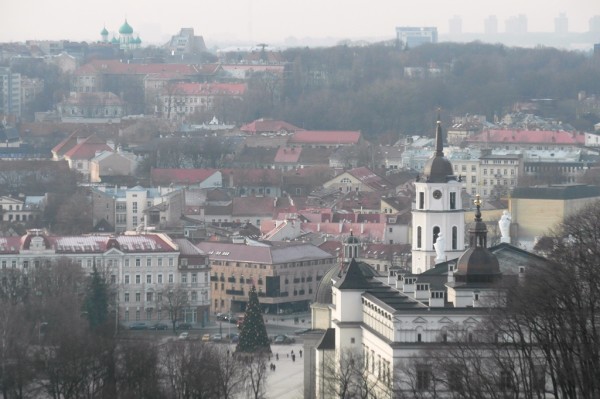I haven’t had many crazy sightseeing days on this trip yet – mainly because I have been traveling relatively slowly, giving me the luxury of just checking out one or two sites each day. But when the Vilnius Tourist Information Centre offered me a free 72-hour Vilnius City Card, I decided to make the most of the opportunity and cram as much into those three days as possible. By doing so, I was also able to evaluate what kind of value the card represents for visitors to the city. One thing was certain – there are a lot of things to do in Vilnius!
Day One: A City Tour
I picked up my card from the tourist office on Vilniaus street in the Old Town around 11:00 a.m. This is the main office, but just one of four locations in the city. The 72-hour City Card includes a free walking tour of the city, as well as a free audio guide. However, because I visited in the off-season, no walking tours were available, so the audio guide was my only option.
And it turned out to be a really good thing.
Having checked out the weather forecast for the upcoming days, I decided Day One was the best day to do the audio guide. Additionally, many museums in Vilnius are closed Mondays and Tuesdays. Picking up my card on a Tuesday, I figured I would save the bulk of my museum visits for the following two days and spend my first day getting a good feel for the city.
I have never toured an entire city by audio guide so I have no basis for comparison, but the Vilnius audio guide highly impressed me. It made over ninety stops throughout the Old Town, including monuments, memorials, significant streets, churches and museums. Many stops offered optional additional commentaries about important figures or interesting legends.
In Cathedral Square, I listened to the story behind the “Stebuklas” or “miracle” tile, which marks the end of the 650 kilometer human chain that was formed between Tallinn, Riga and Vilnius in 1989 to protest the Soviet occupation.

Near the bridge leading to the Republic of Uzupis, I learned about this quirky artists’ quarter that has its own constitution, president, prime minister and anthem.
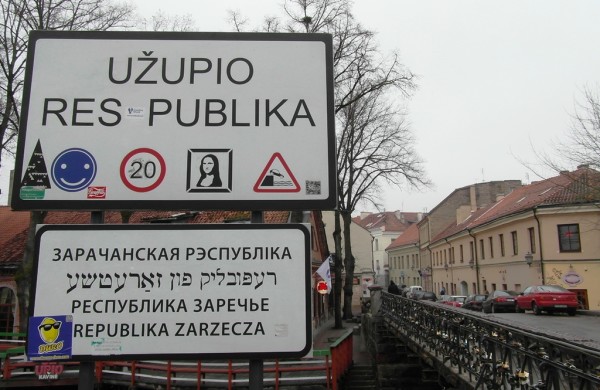
Standing at one end of Stikliu street, I heard about the history of the Jewish Ghetto in Vilnius and as I walked down Bostko street, the guide filled me in on the legend of the dragon of Vilnius.
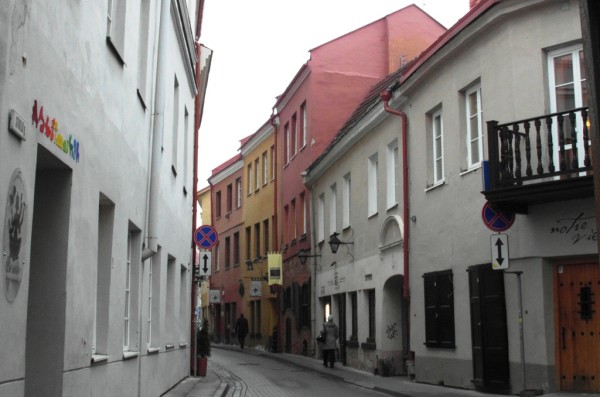
And that’s just a small sample.
Given that it is quite a long tour, it offered a couple “outs” – places at which you could skip ahead and return to the tourism office and cut the tour short. I started the tour around 11:30 and finished around 4:00, making one detour to walk up to the hill where the Three Crosses stand instead of just viewing them from below.
Taking the audio guided tour is a great option for independent travelers who want a thorough orientation to the city without some of the restrictions that a group walking tour might impose. The only complaint I had is that the device is quite large so you really stand out as a tourist – even more than you probably would already. At a cost of 35 Litas (about $13), even if you don’t get a City Card, the audio guide is a great value.
Day Two: Gediminas Hill and a Few Museums
I didn’t see as much as initially planned on Day Two because the weather ended up being better than expected – thus I wanted to spend more time walking around outside taking pictures and walking up to Gediminas Hill than being inside at museums.
That being said, I made three stops included in my City Card: the Museum of Genocide Victims, the Old Arsenal and the New Arsenal.
The Museum of Genocide Victims is housed in a building that served as the KGB headquarters for almost 50 years and serves as a memorial to those who were killed there by the KGB – you can see their names inscribed on the exterior of the building. Exhibits in ten rooms over two floors display historical material from 1940 to 1991, detailing the loss of Lithuanian independence, its occupation by both Nazi Germany and the Soviet Union and its fight to regain its independence in the early 1990s. In the basement, you’ll find the former KGB prison, left as it was when the KGB moved out in 1991.
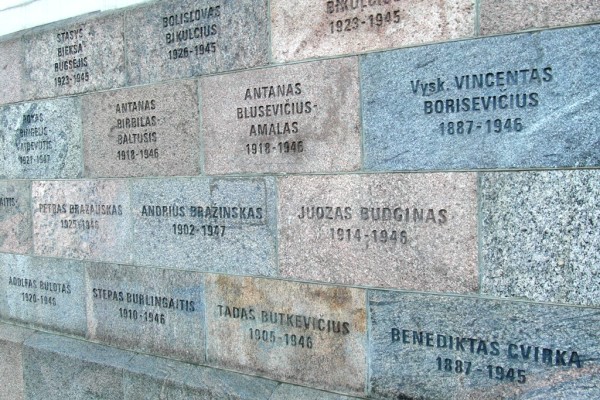
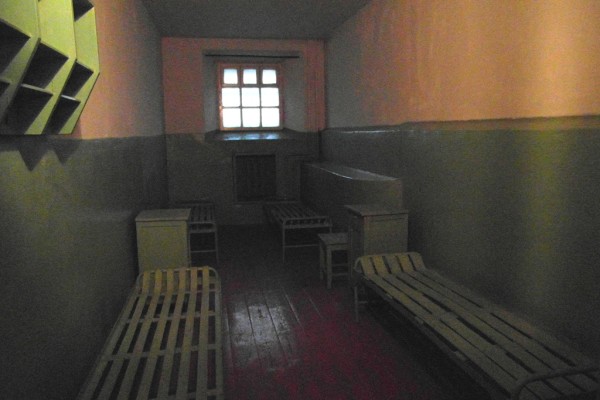
The Old Arsenal and New Arsenal are part of the Lithuanian National Museum. The displays in the Old Arsenal covered the pre-history of Lithuania beginning about 11 million years B.C. and the history of the formation of the Baltic culture through the 13th and 14th centuries. Exhibitions in the New Arsenal focused on the history of the country and traditional Lithuanian culture and customs. I really liked that the museum provided informative brochures (in English!) explaining things like the rural lifestyle in Lithuania and the country’s tradition of cross crafting.
Day Three: A Museum Marathon
On my final day of the 72-hour City Card, I made a big push to get the most out of it, visiting five (yes, five!) museums:
The House of Signatories was probably the highlight of the day. Located on historic Pilies street, the house is notable as the location where the declaration of Lithuanian independence was signed in 1918. I am not sure if it is standard for all visitors or just for non-Lithuanian-speaking visitors, but I received a guided tour of the house by a charming young woman who spoke excellent English. She took me through each of the rooms – about 10 altogether – and provided thorough explanations of the individuals whose property was displayed in each room and the historic events that occurred.
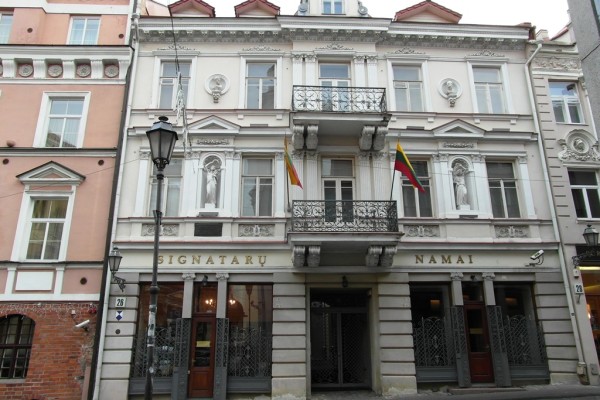
The Church Heritage Museum was a relatively quick stop. It includes a variety of religious art, historical documents and treasure trove from Vilnius Cathedral. I usually like to look at these exhibits but I don’t spend a lot of time reading the descriptions of everything, so I moved through in about twenty minutes.
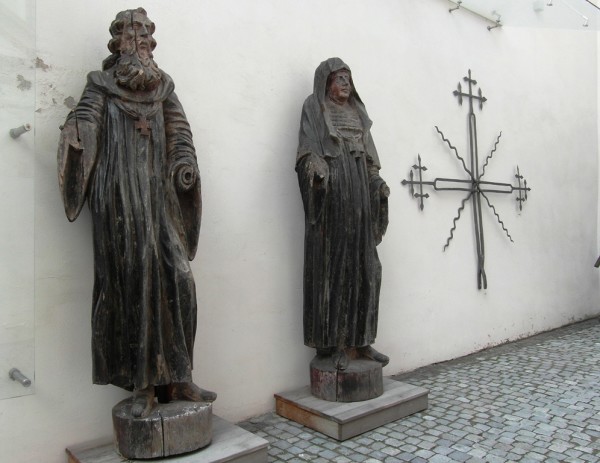
The Museum of Applied Art was a pleasant surprise. I have to admit, I didn’t really know what “applied art” meant. As it turned out, the museum had a current exhibition on fashion through the years, in addition to displays of folk art and icons and a collection of archaeological artifacts from the Palace of the Grand Dukes of Lithuania. This was probably my second favorite museum of the day.
The Museum of Energy and Technology is not the kind of museum I would typically visit, simply because I don’t have a strong interest in “techie” stuff. However, since it was included and sat just across the river from the Museum of Applied Art, I figured I should check it out. It was a museum with a lot of potential, but with limited explanations in English, it was hard to get much out of it. Housed in the first central electric power station in Vilnius, the museum showcased the actual facilities of an electric power plant. It also included an exhibit on transportation and a room of interactive expositions for children.
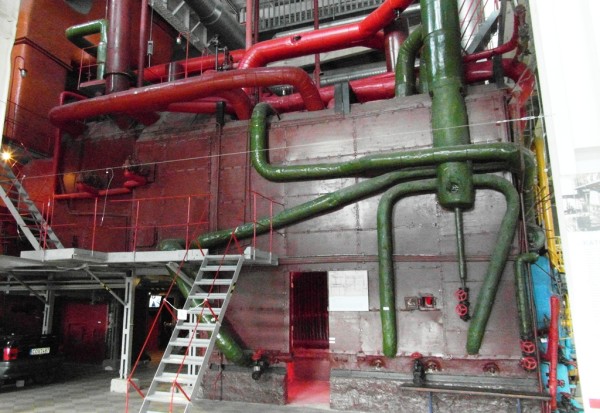
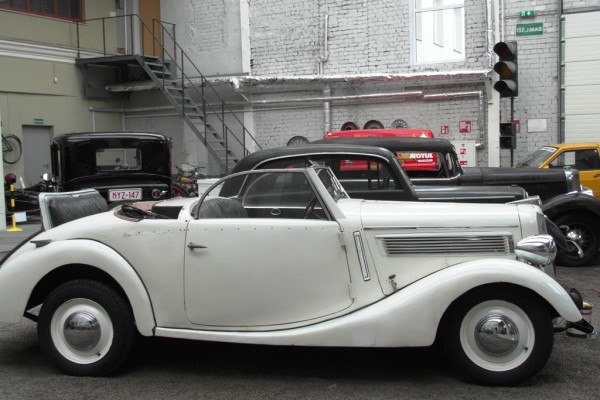
The Vilnius Picture Gallery was my final stop for the day and I was getting a little tired. Established in the Chodkiewicz Palace, the gallery displays a large collection of Lithuanian art from the 16th to the early 20th centuries. Not being a huge art aficionado in the first place, I skimmed through several floors of exhibits in a bit of a hurry. For anyone who really appreciates art, though, this is a must.
A Great Impression of Vilnius
I have to say that the overall infrastructure for tourists in Vilnius really impressed me. Numerous office locations equipped with English-speaking personnel meant you never had to go far if you had a question. Each location provided a plethora of brochures and information in multiple languages, including a 100-page Visitor’s Guide and a series of specialized guides and walking routes relating to themes such as Russian Heritage in Vilnius, Jewish Heritage in Vilnius and Along the Road to Lithuanian Statehood. Signs throughout the Old Town also helped to point you in the right direction.
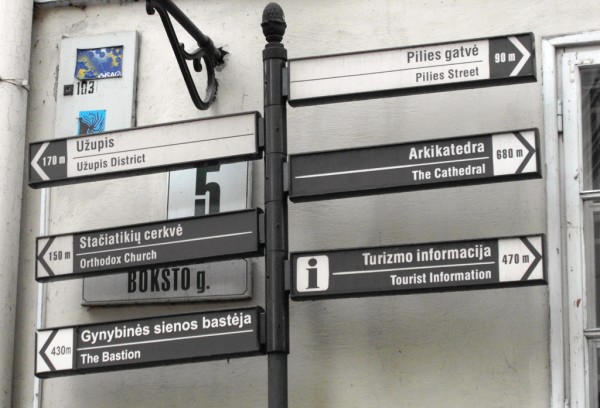
With respect to the City Card, I think the potential value depends on your interests. The 72-hour card normally would have cost me 86 Litas – about 25 Euros or $32. It includes free access to 12 museums, an audio guide, walking tour, free rides on public transportation and discounts at a number of restaurants and some guided tours. I only did the audio guide and 8 of the 12 museums, which would have otherwise cost me a total of 84 Litas. Thus, if I had taken advantage of just one discount or visited one more museum, the card would have been a money-saver.
By the end of my three-day whirlwind exploration of Vilnius, I felt pretty certain about two things: First, Vilnius had more to offer than the other Baltic capitals, Riga and Tallinn – more sights, more museums and a larger Old Town area to explore. Second, even though I saw a lot in three days, it wasn’t enough – I actually ended up spending 11 days in the city and I was glad I did.
Thank you to the Vilnius Tourist Information Centre for sponsoring my accommodations for my first couple nights in Vilnius and for providing me with a 72-Hour City Card.

